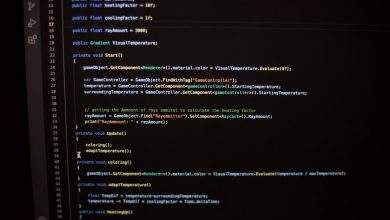
Can a 3060 run ray tracing?
The NVIDIA GeForce RTX 3060 is a popular mid-range graphics card released as part of the RTX 30 series. One of the standout features of the RTX series is real-time ray tracing, a rendering technique that simulates the behavior of light to bring more realism to video games. But the question many gamers and PC enthusiasts ask is: Can the RTX 3060 run ray tracing effectively? The short answer is yes—but there’s more nuance to the story.
Understanding Ray Tracing and the RTX 3060
Ray tracing is a cutting-edge technology that calculates how light rays interact with objects in a virtual scene. This results in highly realistic reflections, refractions, and shadows that were previously difficult to replicate using traditional rendering techniques. The RTX 3060 comes equipped with dedicated RT cores (Ray Tracing cores) and Tensor cores, both crucial for handling ray tracing tasks efficiently.
Ray tracing is highly demanding on GPU resources, which is why not all graphics cards can handle it smoothly. However, the RTX 3060 was designed with this capability in mind, packing enough power to run ray-traced games—albeit with some limitations compared to its higher-end siblings like the RTX 3070 or RTX 3080.
[ai-img]nvidia rtx 3060, ray tracing, gaming pc[/ai-img]Performance in Real-World Scenarios
When it comes to real-world performance, the RTX 3060 is surprisingly capable. In popular ray-traced titles like Control, Cyberpunk 2077, and Metro Exodus, the card delivers playable frame rates at 1080p with ray tracing enabled. To make ray tracing more feasible, gamers often use NVIDIA’s DLSS (Deep Learning Super Sampling), another powerful feature of RTX cards. DLSS boosts performance by rendering the game at a lower resolution and then using AI to upscale the image, maintaining visual quality.
With DLSS enabled, the RTX 3060 can handle many modern games with ray tracing turned on, offering a pleasing balance of visual fidelity and performance. At 1080p, ray tracing with medium to high settings is generally very smooth. At 1440p, you may need to tweak settings or rely more on DLSS to maintain optimal frame rates.
Ideal Use Cases for Ray Tracing on the RTX 3060
The RTX 3060 shines in the following scenarios:
- 1080p Gaming: Delivers excellent performance in ray-traced games when paired with DLSS.
- Moderate Visual Settings: Balancing visual quality and performance makes ray tracing more viable.
- Single-Player Experiences: Ideal for visually rich single-player games where maximum frame rate isn’t as critical as in competitive titles.
Although the 3060 is not the most powerful RTX card, it offers a great entry into ray tracing for budget-conscious gamers. Users wanting ultra settings at 4K resolution with ray tracing might need to consider higher-tier cards due to performance constraints.
Factors That Influence Ray Tracing Performance
- Resolution: Higher resolutions demand more from the GPU. 1080p is the sweet spot for the RTX 3060.
- Game Optimization: Some games are better optimized for ray tracing and DLSS than others.
- Driver Updates: Regular NVIDIA driver updates can improve ray tracing performance over time.
- System Hardware: A well-balanced system with a decent CPU and RAM enhances performance.
Frequently Asked Questions (FAQ)
-
Q: Can the RTX 3060 run ray-traced games at 60 FPS?
A: Yes, especially at 1080p with DLSS enabled and balanced settings. -
Q: Which games support ray tracing on the RTX 3060?
A: Titles like Cyberpunk 2077, Control, Call of Duty: Modern Warfare, and Shadow of the Tomb Raider support ray tracing. -
Q: Is DLSS necessary for ray tracing on the RTX 3060?
A: DLSS is highly recommended as it improves performance while maintaining visual quality. -
Q: Can the RTX 3060 handle ray tracing at 1440p?
A: Yes, but settings may need to be reduced, and DLSS should be enabled to maintain smooth gameplay. -
Q: How does the RTX 3060 compare to higher-end cards for ray tracing?
A: While it can run ray tracing, higher-end cards like the RTX 3070 or 3080 offer significantly better performance at higher resolutions or ultra settings.
In conclusion, the RTX 3060 offers an excellent entry point for gamers interested in exploring ray tracing. With its dedicated hardware and DLSS support, it’s capable of delivering stunning visual effects at a playable frame rate—especially in 1080p gaming scenarios.



